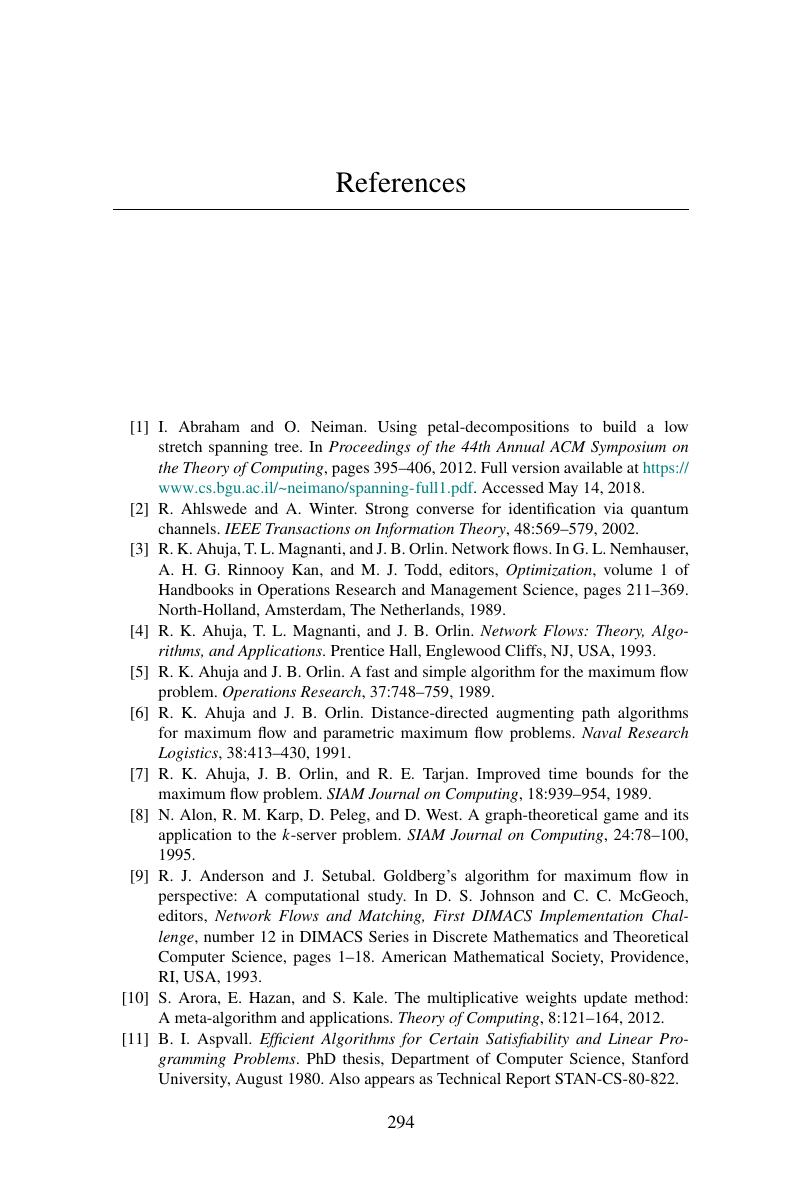Book contents
- Frontmatter
- Contents
- Preface
- Acknowledgements
- 1 Preliminaries: Shortest Path Algorithms
- 2 Maximum Flow Algorithms
- 3 Global Minimum Cut Algorithms
- 4 More Maximum Flow Algorithms
- 5 Minimum-Cost Circulation Algorithms
- 6 Generalized Flow Algorithms
- 7 Multicommodity Flow Algorithms
- 8 Electrical Flow Algorithms
- 9 Open Questions
- References
- Author Index
- Index
- References
References
Published online by Cambridge University Press: 21 August 2019
- Frontmatter
- Contents
- Preface
- Acknowledgements
- 1 Preliminaries: Shortest Path Algorithms
- 2 Maximum Flow Algorithms
- 3 Global Minimum Cut Algorithms
- 4 More Maximum Flow Algorithms
- 5 Minimum-Cost Circulation Algorithms
- 6 Generalized Flow Algorithms
- 7 Multicommodity Flow Algorithms
- 8 Electrical Flow Algorithms
- 9 Open Questions
- References
- Author Index
- Index
- References
Summary

- Type
- Chapter
- Information
- Network Flow Algorithms , pp. 294 - 306Publisher: Cambridge University PressPrint publication year: 2019



